An early start
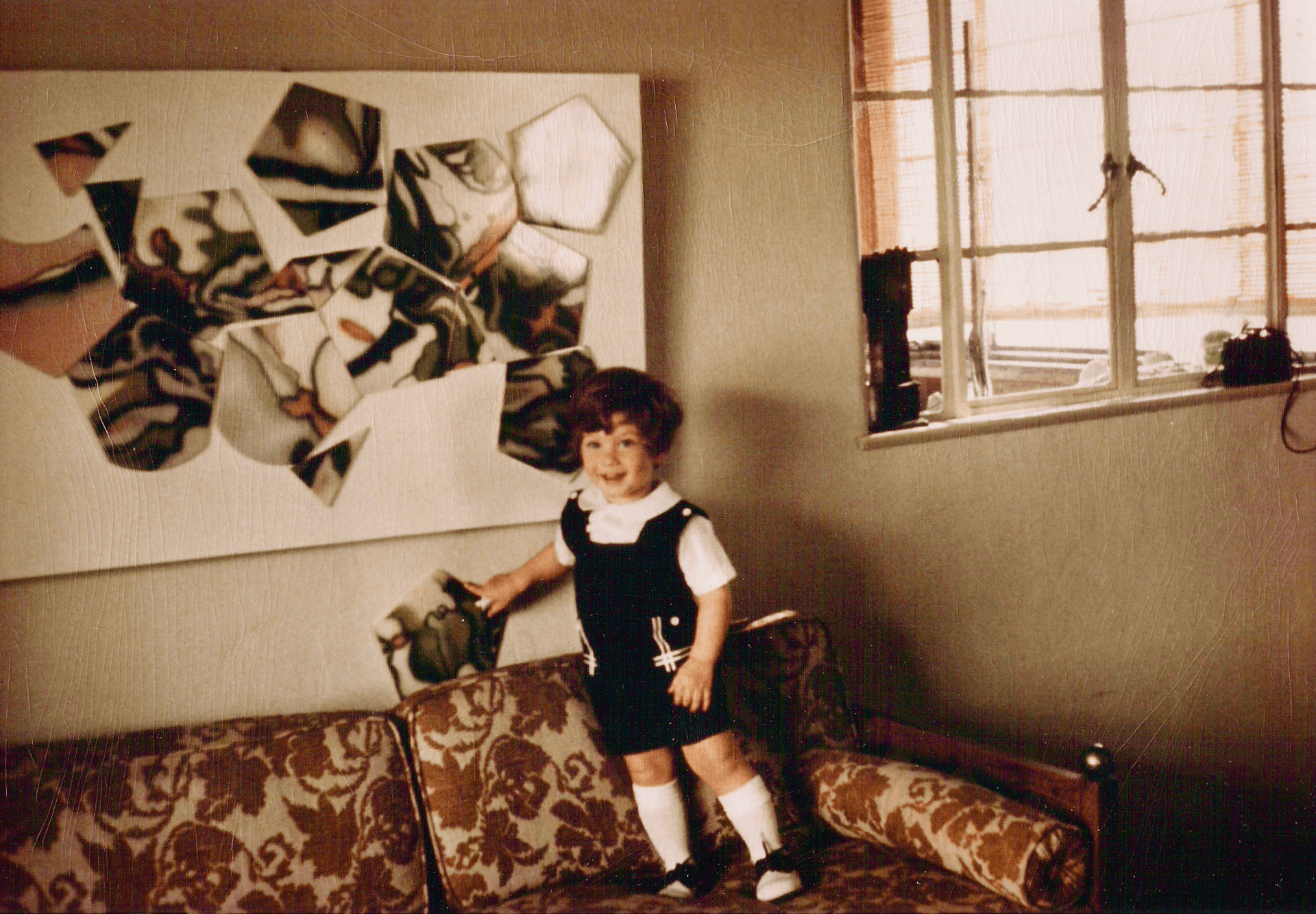
I had an exceptionally early start on my path to becoming a software engineer. My dad was a veteran of the Apollo program who went on to work as a software developer at Bell Labs starting in the 1970s, and taught me math absurdly earlier than it was taught in school. My mom, a composer of classical music, helped me learn to read by age 2. By age 4, I could add 3 digit numbers in my head and compute the powers of 2.
I completed every assignment for the first grade curriculum in the first two weeks. This led to a special written test including square roots and other symbols I recognized from my dad’s math textbooks. I could tell you about binary, hexadecimal, infinite series and a googol versus a googolplex at age 6, which is when we became regulars at Radio Shack. That’s when I took up electronics and started reading the mainframe assembly code printed on the back of my drawing pads. My dad and I would estimate the total wattage of all the lights when we sat down in a restaurant. We walked the halls at Bell Labs and even Fermilab. I met many engineers and scientists and got to glimpse and even get my little hands on some amazing technology.
Everything from A to Z
I was a happy kid, and I read voraciously, everything from Roald Dahl to George Orwell to the New York Times as it was covering Watergate and the end of the Vietnam War. I read both the encyclopedia and the dictionary, page by page, starting at A, while wondering if I’d learn more effectively by being random, so I did both in parallel to hedge my bets.
Uniqueness
My kindergarten teacher told us every snowflake was unique and I protested. I asked, how could she know that without inspecting them all?
While taking a bath in 1975 (age 7) I speculated that being able to do a full-text search and hit count for words or phrases across everything ever written or said in all of human history would be extremely interesting and useful, even though I didn’t see any way to do that. I wondered, what are the shortest universally unique phrases I could produce? As soon as I utter one, it’s disqualified!
C, UNIX, K&R etc.
I wrote my first code in C on UNIX at age 9. My dad worked with people at Bell Labs who contributed to the seminal Kernighan & Ritchie book on the C Programming Language, and we reviewed the draft before it was published. I sent my first emails to my dad in the next room, because I didn’t know anyone else who had email. His coworker at Bell Labs introduced me to voice synthesis. I had to manually enter pages of hex numbers in order to coax a wire-wrap board to utter “Hello” or “Computer”, and had to start over if I made a mistake. I pored over the 1977 Scientific American article by Alan Kay (whom I would later meet at Berkeley!) on graphical user interface research at Xerox PARC, which got my mind whirring.
Climate change
That same year, 1977, sitting on a sunny balcony overlooking a lake carved by glaciers, I came upon a reference to “the greenhouse effect” in an Isaac Asimov essay that explained the physics behind it. This made me deeply uneasy, knowing Venus was 800 degrees F.
This inspired me to read a pile of books on earth resources and alternative energy and write a letter to President Carter suggesting a wholescale shift to renewables and electric vehicles. I did a 6th grade science experiment with solar power, designed my own rechargeable battery-powered cars, and raced them with friends. They were fast, not weighed down by steering or brakes! I did not then proceed to found Tesla.
Online, and on the air at an NPR affiliate
After the great Chicago blizzard of 1978, I became a regular on the world’s first online bulletin board system (Ward and Randy’s CBBS) through a printer-terminal at school, which turned out to be the very creation of the online forum as a concept.
From 6th through 8th grade, three years in a row, I ran a weekly school print-based newspaper I’d co-founded, The Ogden Review, while simultaneously working (every Monday during school hours!) at an NPR radio station at their studio in downtown Chicago as a student journalist, voice actor and audio editor. At WBEZ, I reported on serious issues and current events. I read scripts. We did some skits. I interviewed authors at book fairs, people on the street with a tape recorder around my neck, even a circus clown. I was 11 when I first appeared in the news, for this, in the Chicago Sun Times. I was already creating content in two media at once before I started publishing software.
At my public school, I created a student contact database for an ad-hoc real-time social network with phone trees, to supplement the newspaper, which got squelched by public school administrators over… privacy concerns!
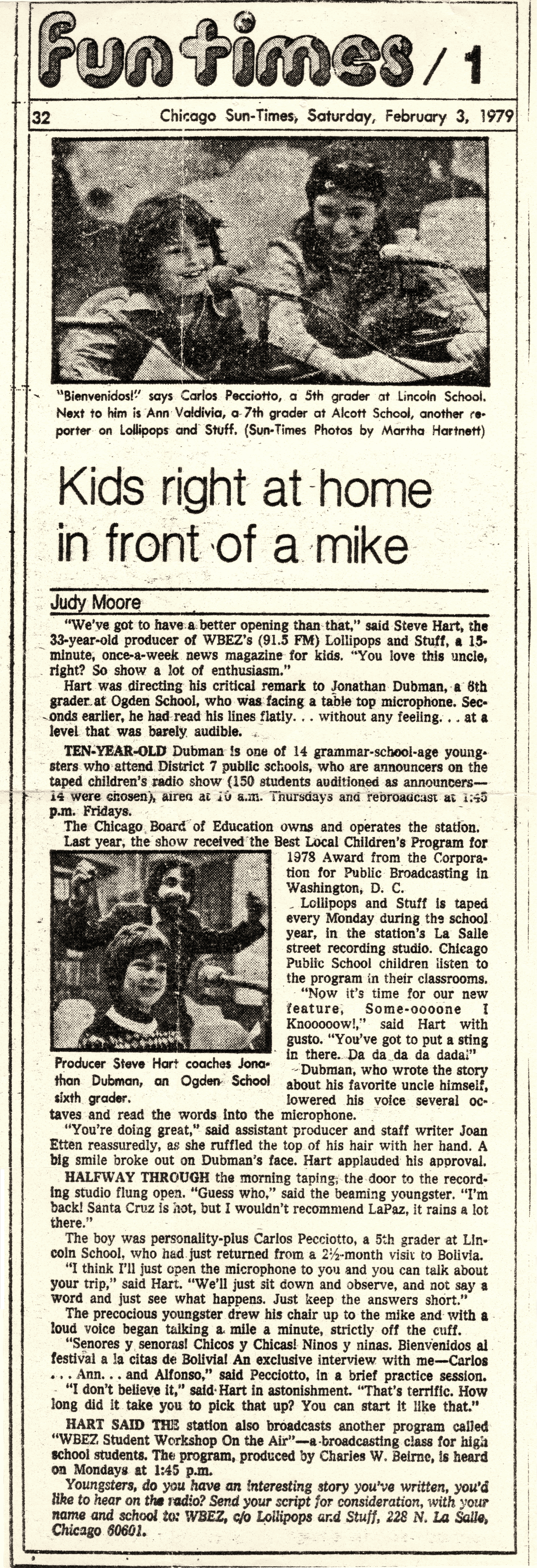
Total eclipse
On my 11th birthday in 6th grade there was a total solar eclipse, the last one visible in the US until 2017. I had led a small, unofficial ad-hoc team to construct viewing glasses for every student in the grade using plans from a science magazine. It was a beautiful vision. But when the eclipse came, we weren’t even allowed to use them. We were all locked in the room with the blinds closed to minimize liability for the school, in case anyone tried to look at the eclipse with bare eyes. Our box of ready devices sat idle, as I quietly steamed, and the world darkened.
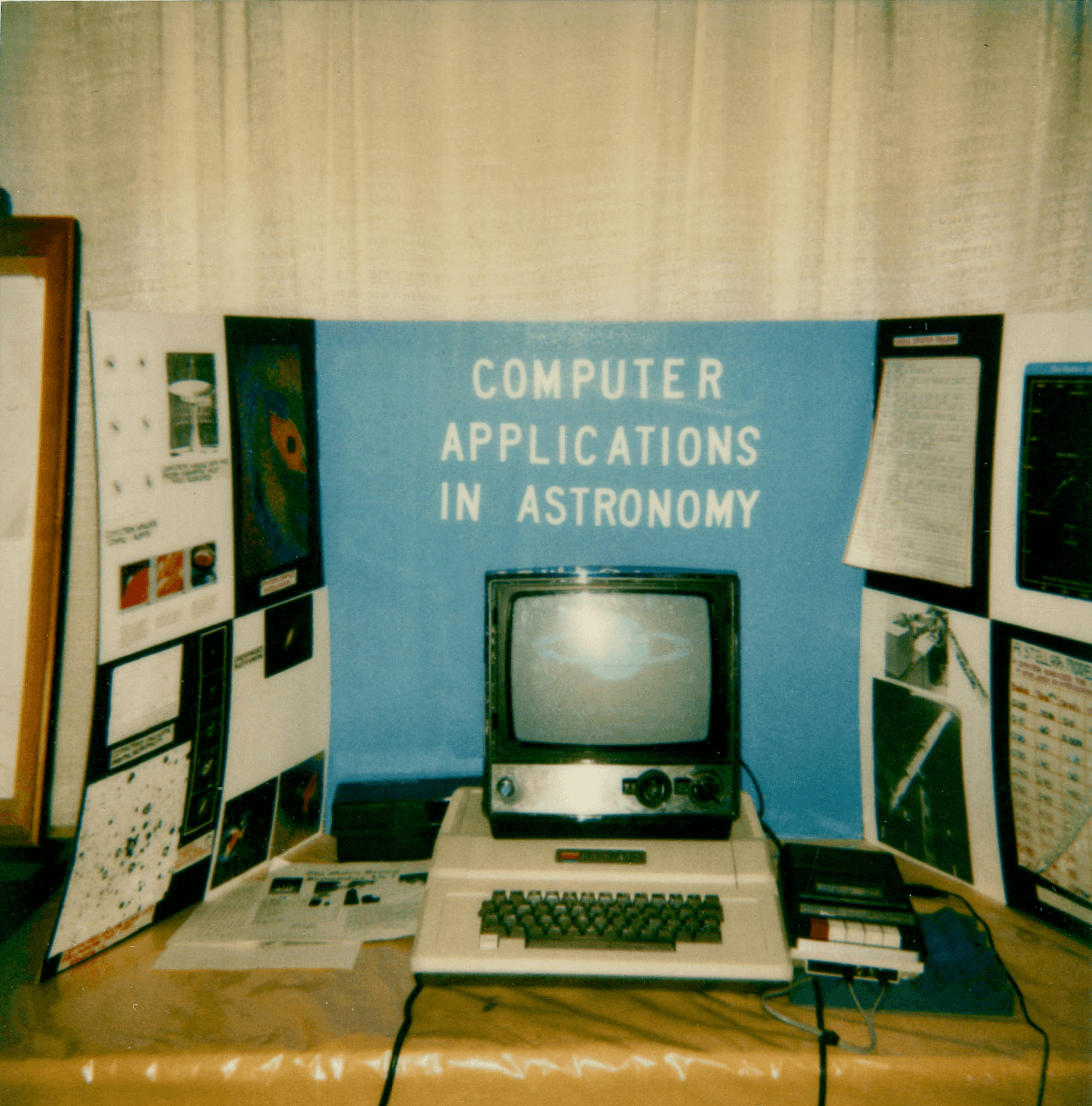
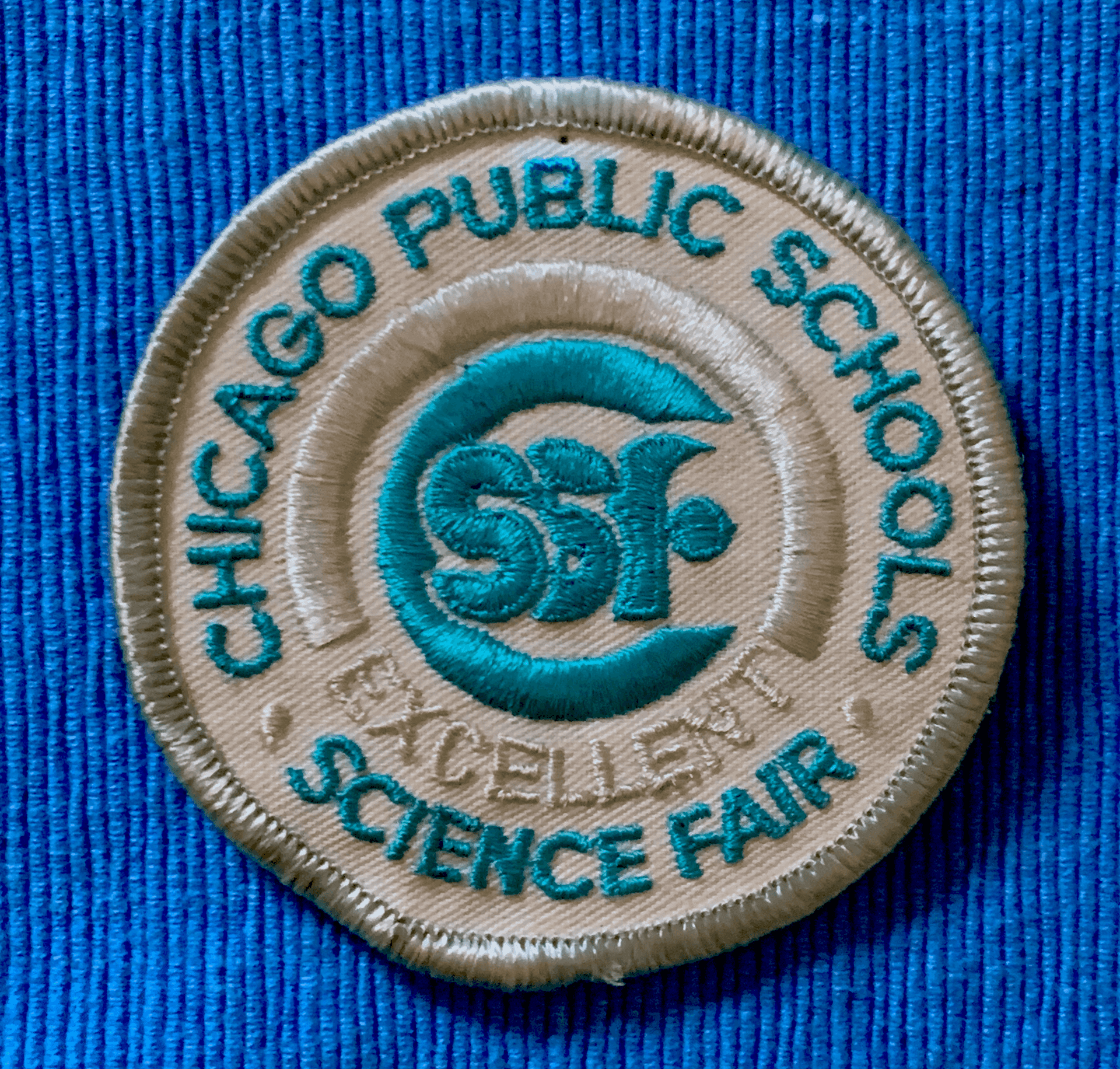
Computer Applications in Astronomy
In 7th grade I did a science project in particle physics observing radioactive decay in 3-D with a cloud chamber (inspired by those visits to Fermilab), which won at the school and the district and qualified me to show it at the Museum of Science and Industry in Chicago. The following year, in 8th grade, my science project on Computer Applications in Astronomy, for which I wrote a lot of code, went all the way.
Both projects got a satisfying pile of awards. I presented the astronomy project at the University of Illinois at Champaign and met many more interesting students, scientists and engineers, and was invited to tour some awesome engineering facilities.
I also tested into a challenging math program at UI Chicago with some of the same kids where I got to spend time on the groundbreaking PLATO system, which helped inspire more groundbreaking work at Xerox PARC.
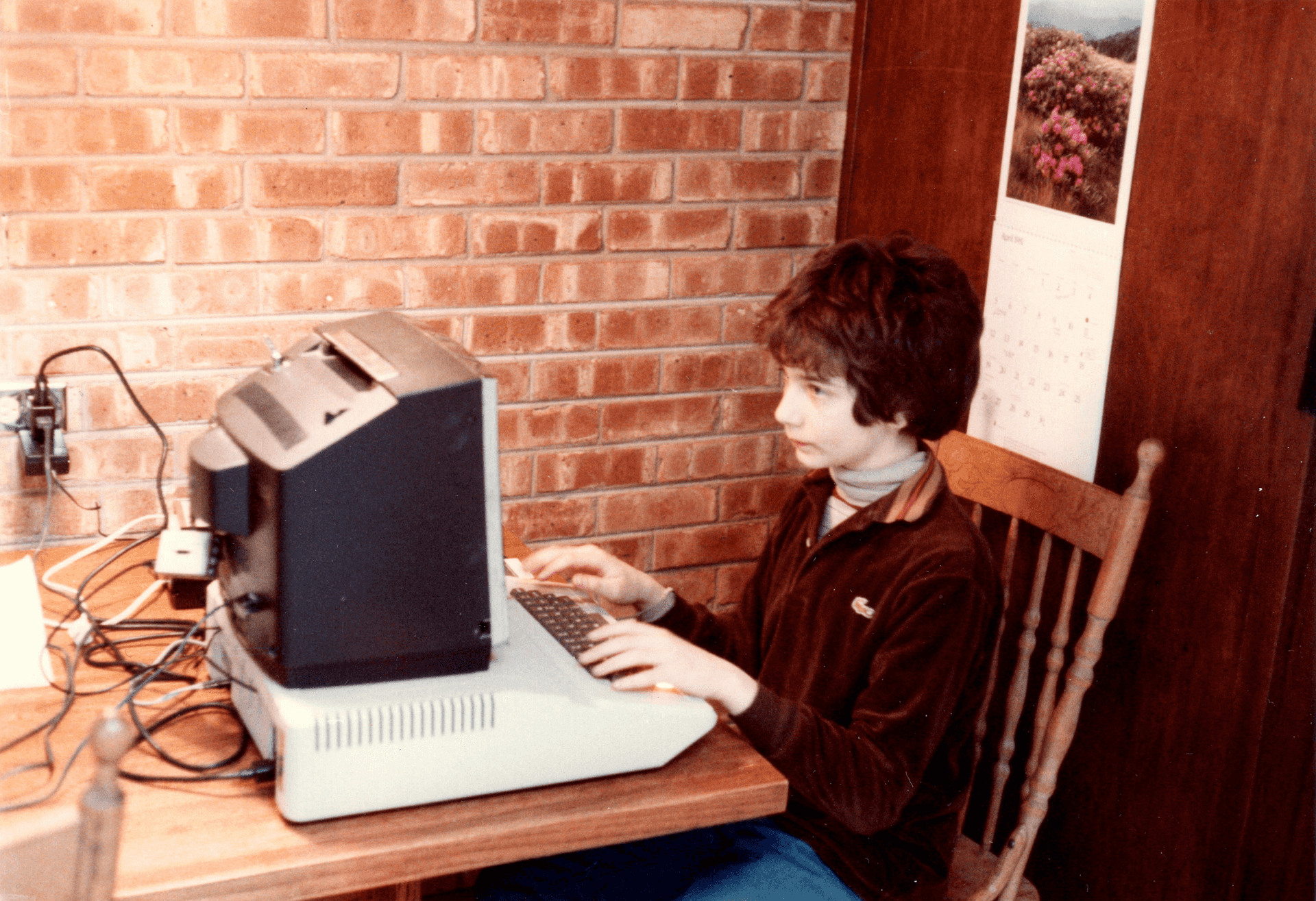
My first Apple computer
I got an Apple II in 8th grade. It came with its own schematics and documented source code written by Woz and Randy Wigginton. I was able to teach myself every last thing about it down to the 6502 machine language.
Throughout this period I played with every programming language and computing platform I could get my hands on. I posted to USENET as the Internet flickered to life, posts on computer industry topics that persist to this day deep in the oldest archives. My friends and I read every computer magazine and played every video and adventure game we could, um, obtain.
So naturally we started started building our own. I still remember my Apple II Plus serial number: 83,273; that number was the size of its globally addressable software market in 1980, when I was 12.